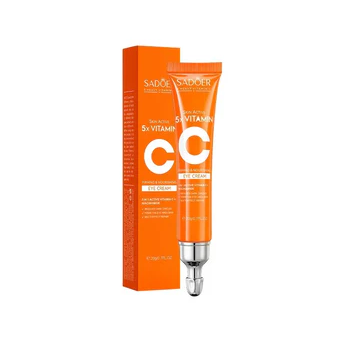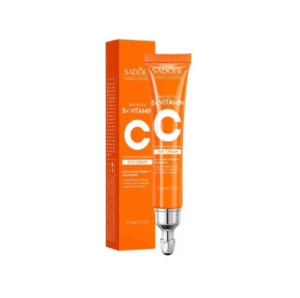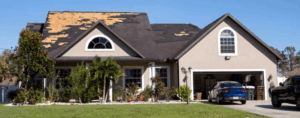The global aesthetic medicine market was valued at USD 97.97 billion in 2021 and is poised for exceptional growth, with projections indicating a compound annual growth rate (CAGR) of 14.3% during the forecast period from 2022 to 2030. This growth will propel the market to a remarkable USD 304.82 billion by 2030. The expanding interest in non-invasive cosmetic procedures, rising disposable incomes, and advancements in technology are key factors driving the robust growth of the aesthetic medicine market.
Market Overview
Aesthetic medicine, encompassing a range of non-surgical procedures designed to improve the appearance and self-esteem of individuals, has witnessed exponential growth in recent years. It includes services such as botulinum toxin injections, dermal fillers, laser treatments, liposuction, hair restoration, and skin rejuvenation. These minimally invasive procedures have gained popularity due to their relatively low risk, reduced recovery times, and immediate results.
The growing focus on enhancing physical appearance, particularly among aging populations and individuals seeking preventive care, is propelling the market. Additionally, social media platforms and celebrity culture have played an essential role in promoting beauty and wellness, further increasing the demand for aesthetic procedures.
𝐄𝐱𝐩𝐥𝐨𝐫𝐞 𝐓𝐡𝐞 𝐂𝐨𝐦𝐩𝐥𝐞𝐭𝐞 𝐂𝐨𝐦𝐩𝐫𝐞𝐡𝐞𝐧𝐬𝐢𝐯𝐞 𝐑𝐞𝐩𝐨𝐫𝐭 𝐇𝐞𝐫𝐞:
Market Drivers
Several factors are driving the growth of the global aesthetic medicine market:
- Rising Demand for Non-invasive Procedures: Non-invasive and minimally invasive procedures such as botulinum toxin injections (Botox), dermal fillers, and laser treatments have seen a surge in popularity due to their relatively quick recovery times and minimal side effects. These procedures are accessible to a broader range of people, including those seeking cosmetic enhancements without the need for extensive surgery.
- Aging Population: As the global population ages, there is an increased demand for aesthetic treatments to combat the visible signs of aging. Cosmetic procedures that focus on reducing wrinkles, lifting skin, and promoting facial rejuvenation are particularly in demand among older adults.
- Advancements in Technology: Technological advancements in aesthetic medicine, such as laser-based treatments, ultrasound technologies, and radiofrequency devices, have improved the effectiveness and safety of procedures. These innovations are expanding the variety of options available to consumers, driving further market growth.
- Increasing Social Media Influence: Social media platforms, particularly Instagram and YouTube, have fostered a culture of self-expression and beauty enhancement. The influence of influencers, celebrities, and online communities is helping normalize and popularize aesthetic treatments, especially among younger generations who seek instant and non-invasive results.
- Rising Disposable Incomes: As global economies recover and disposable incomes rise, more individuals are able to afford elective aesthetic procedures. In emerging markets, increasing disposable incomes are driving demand for cosmetic enhancements.
- Growing Focus on Mental Health and Self-esteem: A growing emphasis on mental well-being and self-esteem has contributed to the popularity of aesthetic treatments. Many individuals seek cosmetic procedures to boost their self-confidence, with positive results leading to improved overall mental health and body image.
Market Segmentation
The aesthetic medicine market can be segmented based on procedure type, end-user, and geography.
- By Procedure Type:
- Injectables: Injectables, including botulinum toxin (Botox) and dermal fillers, are among the most popular treatments in aesthetic medicine. Botulinum toxin is primarily used for wrinkle reduction and facial expression control, while dermal fillers are used to restore facial volume, smooth wrinkles, and enhance facial contours.
- Laser & Light Therapy: Laser treatments are commonly used for skin resurfacing, tattoo removal, hair removal, and acne scar treatment. Advancements in laser technologies have made these treatments safer and more effective, which in turn has driven their adoption.
- Body Contouring: Non-surgical body contouring procedures, such as cryolipolysis (fat freezing) and radiofrequency treatments, are gaining popularity for individuals seeking to reduce fat in specific areas of the body without undergoing invasive surgery.
- Hair Restoration: Hair restoration treatments, including platelet-rich plasma (PRP) therapy and hair transplants, are increasingly popular, especially among individuals experiencing hair loss due to aging or other factors.
- Others: Other aesthetic procedures include skin rejuvenation, chemical peels, microdermabrasion, and surgical procedures such as liposuction and rhinoplasty.
- By End-User:
- Clinics and Dermatology Centers: A significant share of the aesthetic medicine market is accounted for by specialized dermatology clinics and aesthetic centers, which offer a wide range of non-invasive procedures. These centers provide personalized treatments with professional consultations and advanced technology.
- Hospitals: Although hospitals are traditionally associated with medical procedures, they have also incorporated aesthetic medicine services, particularly in departments like plastic surgery and dermatology.
- Home Use: The increasing availability of at-home aesthetic treatments, including at-home laser devices and skincare products, is gaining popularity among consumers looking for convenient, lower-cost alternatives to professional services.
- By Geography:
- North America: North America is the largest market for aesthetic medicine, particularly in the United States, where the demand for minimally invasive cosmetic treatments is high. The region also benefits from the presence of leading industry players, advanced healthcare infrastructure, and a growing consumer base seeking cosmetic enhancements.
- Europe: Europe holds a significant share of the global market, driven by strong demand in countries such as the UK, Germany, and France. The growing popularity of aesthetic treatments, particularly among the aging population, is fueling market growth in this region.
- Asia Pacific: The Asia Pacific region is expected to experience the highest growth rate in the forecast period. Countries such as China, Japan, and South Korea are witnessing increased demand for aesthetic treatments, fueled by rising disposable incomes and the growing middle class.
- Latin America and the Middle East: Both Latin America and the Middle East are experiencing a steady rise in the adoption of aesthetic medicine. In Latin America, Brazil is a key market due to its strong cosmetic surgery culture. The Middle East is seeing growing demand for aesthetic treatments due to the region’s increasing focus on luxury services and wellness.
Regional Analysis
- North America:
North America remains the largest market for aesthetic medicine, driven by high consumer spending, advanced healthcare infrastructure, and a strong preference for cosmetic treatments. The U.S. is the leading country in this region, where services like Botox and dermal fillers are highly popular. The market is also influenced by the growing adoption of technological innovations in aesthetic medicine.
- Europe:
Europe is a significant player in the aesthetic medicine market, with the UK, France, and Germany being the primary markets. Rising demand for non-surgical procedures, along with an aging population, is contributing to market growth. Additionally, advancements in technologies such as laser skin treatments are expanding the range of available services.
- Asia Pacific:
Asia Pacific is set to witness the fastest growth in the aesthetic medicine market, driven by rapid urbanization, rising disposable incomes, and a growing focus on personal appearance. Countries like South Korea, Japan, and China are leading the charge, with increasing demand for non-invasive beauty procedures.
- Latin America and the Middle East:
Latin America and the Middle East are also experiencing steady growth in the aesthetic medicine market. In Latin America, Brazil is a major hub for aesthetic procedures, particularly in plastic surgery. In the Middle East, countries like the UAE and Saudi Arabia are focusing on luxury wellness services, further propelling market growth.
Key Companies in the Aesthetic Medicine Market
The aesthetic medicine market is highly competitive, with a variety of key players offering a wide range of treatments and services. Notable companies in the market include:
- Allergan: Known for its Botox product, Allergan is one of the leaders in the global aesthetic medicine market, offering injectables and other aesthetic solutions.
- Ipsen: A major player in the field of botulinum toxin products, Ipsen offers aesthetic solutions for wrinkle treatments and other cosmetic enhancements.
- Revance Therapeutics: Revance specializes in innovative botulinum toxin treatments for aesthetic applications, including its DaxibotulinumtoxinA injection for facial wrinkles.
- Merz Pharmaceuticals: Merz offers a range of aesthetic treatments, including dermal fillers and botulinum toxin products.
- Medytox: Medytox focuses on the development of botulinum toxin and hyaluronic acid-based products for aesthetic procedures.
- Lumenis: A leading company in the laser and light technology space, Lumenis offers advanced solutions for skin resurfacing, hair removal, and other aesthetic treatments.
Conclusion
The global aesthetic medicine market is poised for substantial growth, with an expected market value of USD 304.82 billion by 2030. The demand for non-invasive and minimally invasive procedures, fueled by technological advancements, social media influence, and the desire for aesthetic enhancement, is driving this growth. As the industry continues to evolve and attract consumers from various demographics, the aesthetic medicine market is set to experience a transformative shift, bringing more innovative solutions to individuals seeking self-improvement and enhanced well-being.
More Trending Latest Reports By Polaris Market Research:
Radio-Frequency Identification (RFID) Market
Building and Construction Sheets Market
Bringing the invisible to light: The rise of cryo-electron microscopy market
Software-Defined Anything (SDx) Market









